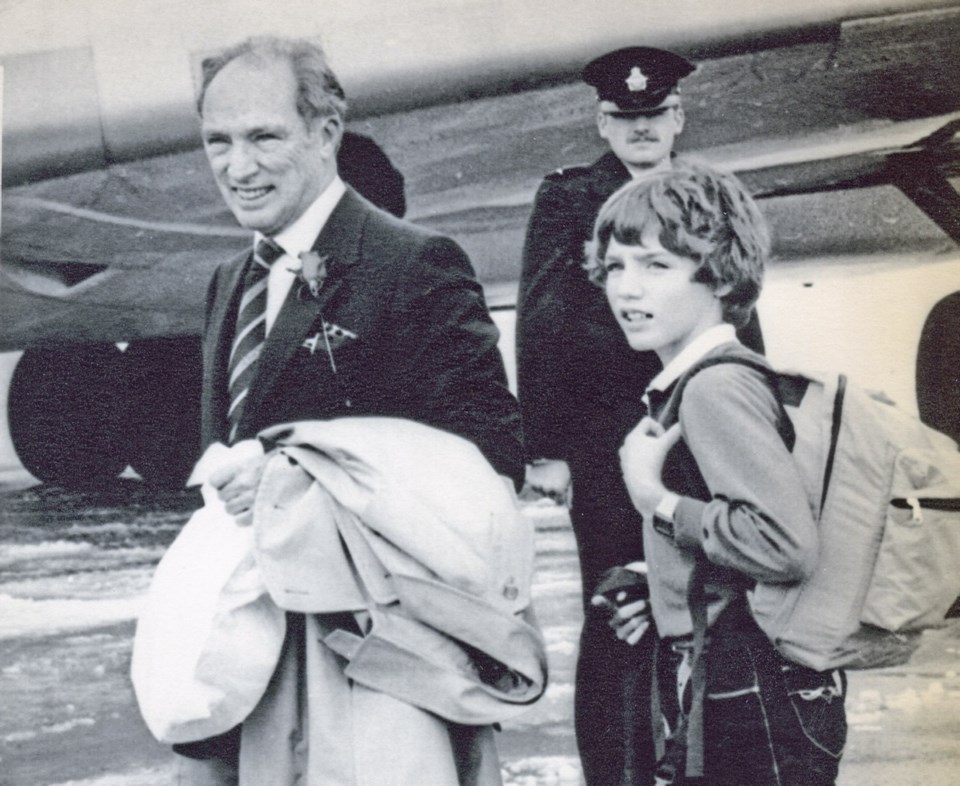People are scoping out every possible factor that could suggest what might happen in a likely minority government after Monday’s federal election.
There’s an easier way to do this.
Just look at Pierre Elliott Trudeau’s career. Based on the story so far, whatever happened to Pierre is likely going to happen to his son.
Justin Trudeau has followed in his father’s footsteps so far to a degree that’s getting eerie.
It’s like Trudeau the Second is preordained to follow the same route, and stumble in the same holes, that his father did.
If the parallels continue, Justin Trudeau will emerge from his first term diminished and exposed, but with some kind of patched-together hold on power.
That’s just what happened to dad. Both father (1968) and son (2015) had fabulous charismatic triumphs in their first contests. Pierre’s first campaign as leader turned into a rock star “Trudeaumania” tour of the country and he won overwhelmingly.
Justin led the greatest comeback in history, going from third-party status to a clear majority.
In B.C. he also matched his father’s record of winning a majority of the seats in the province, something no other Liberal leader managed. There are similarities in their governments, as well. Both were keen to make major changes in society and completely indifferent to debt. Both spent with abandon and could turn on a dime to abandon policies when it suited them.
Both came on the scene as fresh new faces who drew interest from the rest of the world.
And both of them faded badly on their second tries. The extent of Justin Trudeau’s slump can’t be measured until Monday night. But he’s a long way from a majority at this point, and even retaining power is in question.
So now we wait to learn if yet another chapter of the father’s career — a minority second term — will be reenacted by the son.
A Pierre Trudeau biographer, John English, noted other similarities in an interview with Maclean’s magazine this week.
The overall campaign is comparable with the 1972 race as well. Tensions over energy policy were just starting to build then. They’re at full boil now.
The NDP leaders (David “corporate welfare bums” Lewis then, Jagmeet Singh now) campaigned well.
And in the background, there was unease about the U.S. presidency. Richard Nixon’s term was just starting to run off the rails then. Donald Trump’s is completely off the edge of the map now.
Pierre Trudeau barely hung on in the 1972 election. His party lost a few dozen seats, winning 109 seats to Conservative Leader Robert Stanfield’s 107.
(The other similarity between 1972 and 2019 is between Stanfield and current Conservative Leader Andrew Scheer. Stolid, restrained men, not known for moving crowds.)
Pierre Trudeau recruited NDP support and governed for two more years, tilting left on policies. Then he broke off the arrangement and called another election, which restored his majority.
The scene is more complicated this time.
There’s the Bloc Québécois to factor in, as well as the NDP.
It’s not out of the question that a Green Party seat, or seats, could become crucial.
That would make for an astounding confirmation of the old scenario that is trotted out every election, and nearly always exposed as a fable: “This election could come down to how B.C. votes.”
What makes it particularly enticing this time is that there are 42 seats in B.C. The province’s share has edged up over the years. In 2015, it broke Liberals 17, NDP 14, Conservatives 10, Green 1.
The expectation that the Liberal count is going to decline creates room for speculation that shuffling the 42-card B.C. deck could count more than it normally would.
A final comparison: In the 1972 election, Pierre Trudeau lost 75 per cent of the B.C. seats he’d won in 1968, and more of them went Conservative than NDP.
Does what happened 47 years ago matter?
Not much. Unless that similarities between then and now and a son’s history of following his father are still in play.
In the immortal phrase of biographers Christina McCall and Stephen Clarkson: “He haunts us still.”



